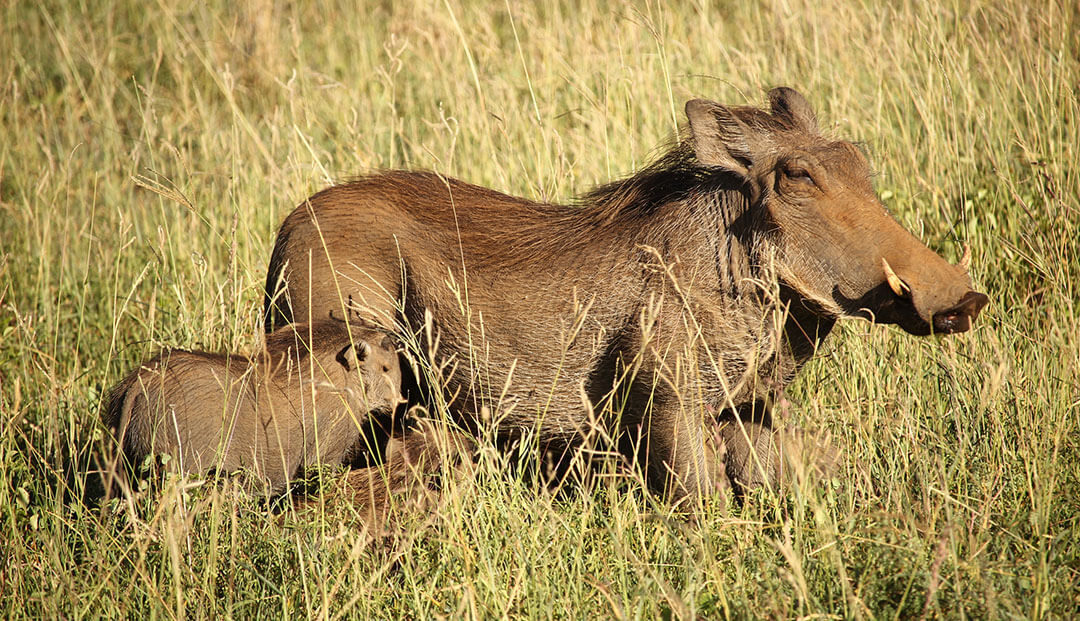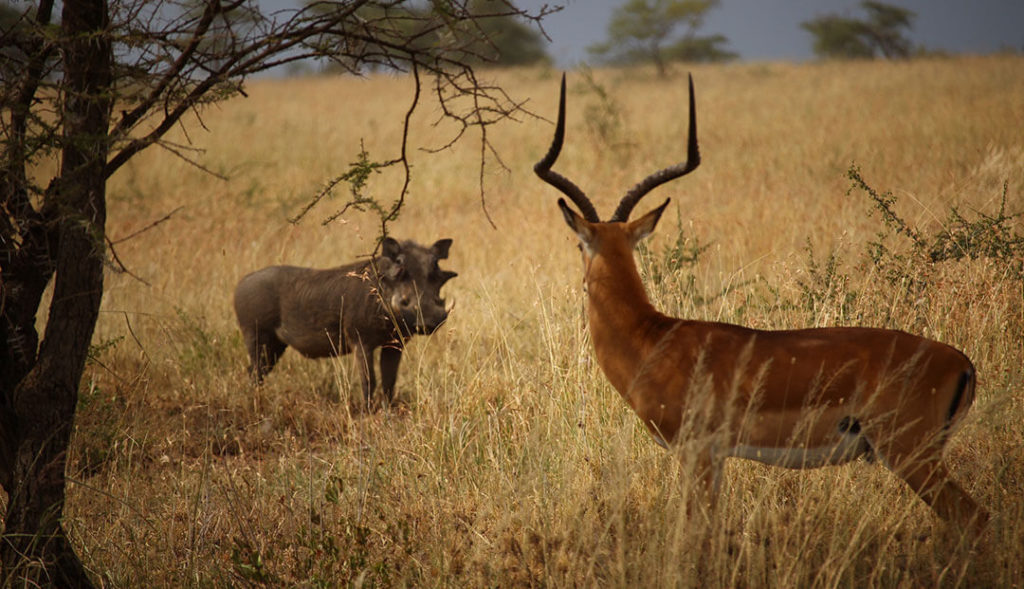Well known as the unforgettable Pumba character in Disney’s epic film The Lion King, warthogs are some of the cutest creatures found in the African bush.
According to Chinese astrology, 2019 is the year of the pig, so what better what to celebrate this, than by taking a closer look at Africa’s very own wild pig, the warthog! To help you learn more about these beautiful beasts, we’ve put together a list of interesting warthog facts. Continue reading to discover fascinating facts about this peculiar warted-hog!
Learn more about your favourite wild animals. Read our collection of animal facts.
Fun Warthog Facts
Warthog Body
Forming part of the swine family, related to pigs, hogs and boars, warthogs have a small-framed body and massive head. The huge head is adorned with bizarre warty protrusions, bushy whiskers and an impressive set of ivory tusks.
Scientific Name of Warthog
The scientific name for the Warthog is Phacochoerus Africanus. The name ‘warthog’ comes from the protrusions on the sides of their faces, which are a combination of bone and cartilage. The male’s warts are much more pronounced, with upper warts growing to protect their eyes during fights with other males during mating season.
Species of Warthog
There are two different species of warthog found in Africa:
- The common warthog (Phacochoeru africanus) is widely spread across sub-Saharan Africa.
- The desert warthog, (Phacochoerus aethiopicus) occurs in northern Kenya, Ethiopia and Somalia.
Although warthogs reproduce at a high rate, the populations seem to be in decline.
Warthog Tusks
Both male warthogs (boars) and females (sows) have ivory tusks on their upper and lower jaws, which are extremely sharp. Their tusks are used for digging up solid soil, defending themselves against predators and fighting against rivals. Warthogs are threatened by poachers who hunt them for their ivory tusks and meat. Warthog tusks have long been used in ornamental carving.
Social Dynamics
Warthogs are sociable animals and live in matriarchal groups called “sounders.” Sounders occupy home ranges from grasslands to savanna woodlands but are not territorial. Warthogs love to communicate with each other and use a variety of different sounds from grunts to squeals and snorts. After reaching adulthood, boars will leave the sounder and lead a solitary life.
Warthog Habitat and Reproduction
Warthogs do not dig their own burrows but sleep in abandoned holes that were dug out from other animals, such as porcupines and aardvarks. Female warthogs let their babies go into the dens first, then will enter the burrow backwards so that if there is a threat, she can use her sharp tusks to protect her young.
Females with piglets will fight vigorously against predators, sometimes causing serious injuries with their tusks. Warthogs are classified as “cooperative breeders”, meaning that female warthogs may foster nurse piglets if they lose their own litter.
Warthog Diet
Warthogs mainly eat dry grass and will use their snout to dig for roots and bulbs. Warthogs are omnivores, so if they have the opportunity, they will scavenge on meat.
Warthog Spa
Warthogs love to wallow in the mud to help regulate their temperature and protect their naked skin from the African sun. Rolling in the mud provides a natural sunscreen and rids parasites from their exposed skin. Warthogs have been observed allowing vervet monkeys and mongoose to groom them by removing ticks from their hairless hinds. Warthogs have been observed allowing banded mongoose and vervet monkeys to groom them to remove ticks from their hairless hides.
Spotting wild warthogs in the African bush is a common occurrence! If you’d like to see these adorable creatures in the wild, contact us to book your African safari trip!
If you enjoyed reading these interesting facts about warthogs, check out our list of interesting facts about other African Animals!


